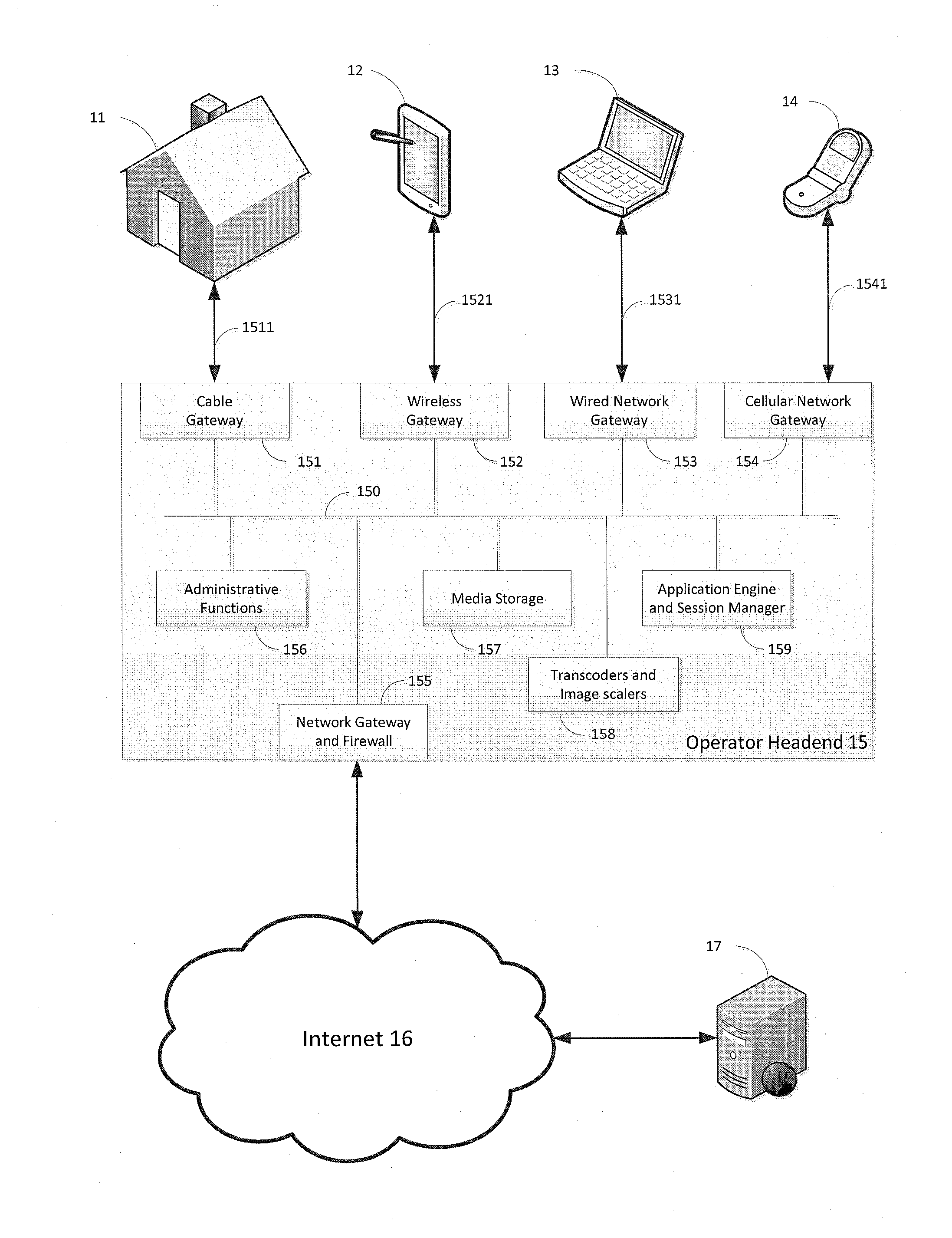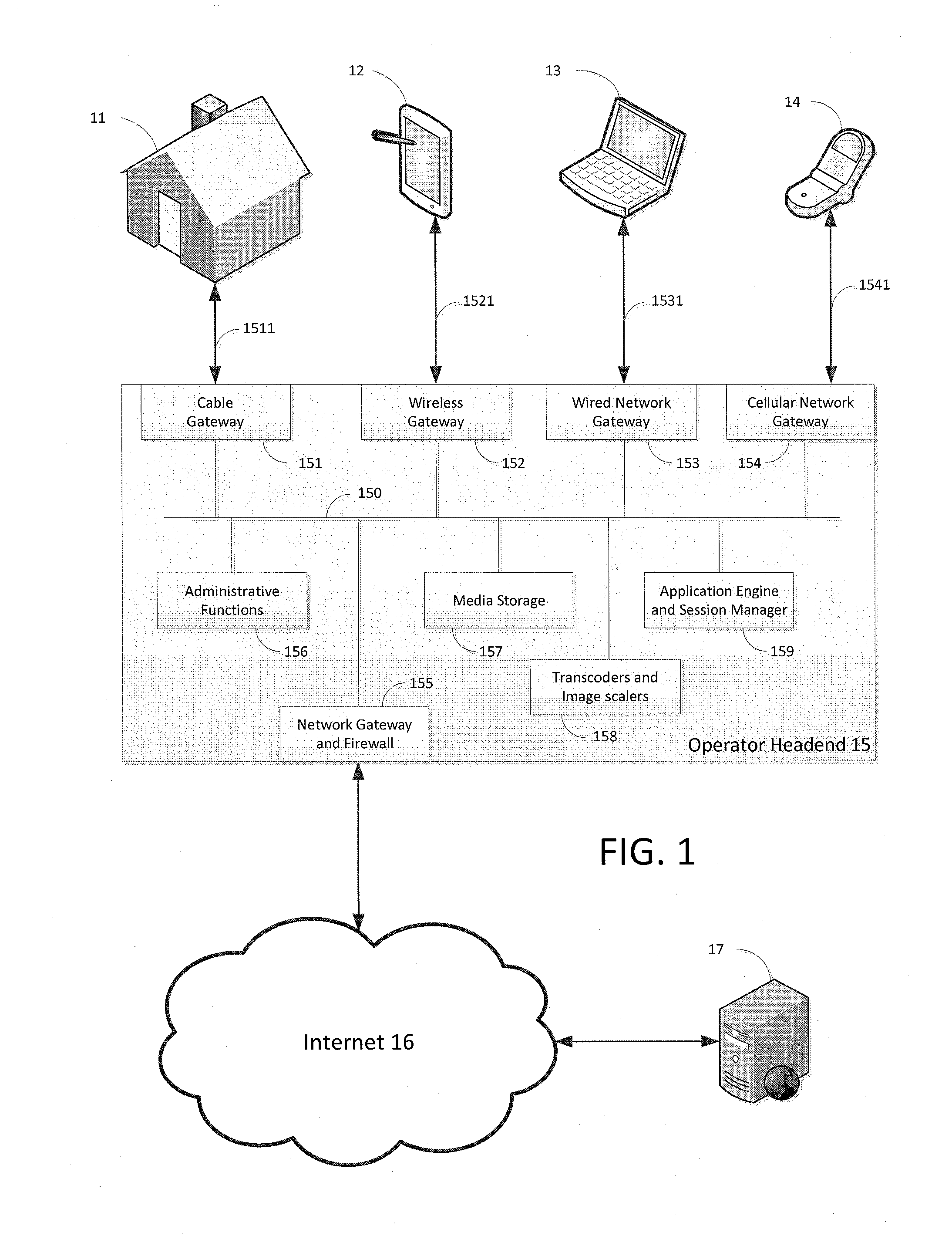Graphical Application Integration with MPEG Objects
a technology of graphical application and mpeg object, which is applied in the field of computer graphics display memory system and, can solve the problems of inability to use caching mechanisms, computationally expensive audiovisual data for transmission over such a data network, and difficulty in encoding output, so as to achieve more efficient inter-encoding, improve efficiency, and reduce bandwidth
- Summary
- Abstract
- Description
- Claims
- Application Information
AI Technical Summary
Benefits of technology
Problems solved by technology
Method used
Image
Examples
first embodiment
[0005]Thus, in a first embodiment there is given a method of providing an image to a client device from an application execution environment having a layout engine that assembles graphical components into a graphical user interface screen for a graphical application, and a rendering library that renders graphical components into pixels. The method includes receiving, from the layout engine, one or more paint instructions having parameters that pertain to a given graphical object. Next, the method requires computing a hash value based on the received one or more paint instructions. There are two paths, depending on whether the hash value is contained within a cache memory. If so, the method calls for retrieving, from the cache, encoded audiovisual data that are uniquely associated with the hash value, and transmitting the retrieved audiovisual data to the client device. If not, the method requires several more steps. The first such step is forwarding the received one or more paint in...
second embodiment
[0010]Thus, in a second embodiment there is provided a method of transmitting, to a client device, images that comprise an animation. The method requires first receiving a current image into a computing processor. As with the first method embodiment, there are two paths. When the current image is identical to a previously rendered image, the previously rendered image being uniquely associated with an encoded image in a cache memory, the method concludes by transmitting to the client device the cached, encoded image without encoding the current image. However, when the current image is not identical to a previously rendered image, but shares at least a given minimum percentage of its pixels with a given, previously rendered image, the method continues with a number of additional steps. The first such step is identifying the current image and the given, previously rendered image as belonging to a common animation. The second such step is encoding the current image according to a predi...
third embodiment
[0013]Therefore, in a third embodiment there is provided a method of forming two encoded slices from data comprising a given encoded slice, each encoded slice comprising a sequence of macroblocks that are encoded according to a variable length code. This method includes locating, in the given slice, a location of a macroblock. Then, the method requires altering a DC luma value or a DC chroma value of the located macroblock without fully decoding the macroblock according to the variable length code. The first formed slice consists of the data of the given slice up to but not including the altered macroblock, and the second formed slice consists of the encoded macroblock and any subsequent encoded macroblocks in the given slice. Altering the DC luma value or the DC chroma value may be performed through a bit-shifting operation.
PUM
 Login to View More
Login to View More Abstract
Description
Claims
Application Information
 Login to View More
Login to View More - R&D
- Intellectual Property
- Life Sciences
- Materials
- Tech Scout
- Unparalleled Data Quality
- Higher Quality Content
- 60% Fewer Hallucinations
Browse by: Latest US Patents, China's latest patents, Technical Efficacy Thesaurus, Application Domain, Technology Topic, Popular Technical Reports.
© 2025 PatSnap. All rights reserved.Legal|Privacy policy|Modern Slavery Act Transparency Statement|Sitemap|About US| Contact US: help@patsnap.com



